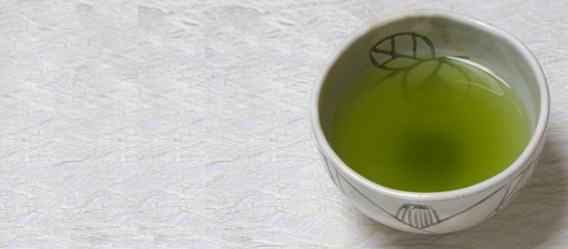
There is a long history behind the beverage we know as tea. The drink that is said to be second only to water in its popularity worldwide, is made from pouring boiling water over cured leaves of camellia sinensis, a plant native to East, Southeast and South Asia, otherwise commonly know as tea flower, or tea plant.
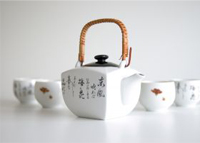 The origin of tea is shrouded in myth and mystery. It is often said thattea came about as a drink because Shen Nong - literally "divine farmer" - a legendary and mythical emperor who was thought to have brought agriculture to China at the beginning of its civilization - was sitting under a tree when a breeze blew stray leaves into his boiling pot of water which led to the discovery of tea as a beverage. The origin of tea is shrouded in myth and mystery. It is often said thattea came about as a drink because Shen Nong - literally "divine farmer" - a legendary and mythical emperor who was thought to have brought agriculture to China at the beginning of its civilization - was sitting under a tree when a breeze blew stray leaves into his boiling pot of water which led to the discovery of tea as a beverage.
Tea is popular worldwide across many cultures and boasts of many medicinal and health benefits. The variety of tea leaves available for the tea lover today is endless as there are wide varieties being cultivated worldwide now, each with distinct taste and properties. It would not be an exaggeration to claim that the reach of tea is global.
While the origins of tea may be romanticized, there is definitely a science to art of tea brewing. Making a perfect cup of tea is not as difficult as many think. With a bit of research into the art of tea brewing, you can brew your perfect cup of tea even with basic tea equipments, and in the comfort of your own home.
This month, we take a look at the art of tea brewing. So put the kettle on, and make yourself a nice warm cup of tea to keep the cold out.
Tea Brewing Basics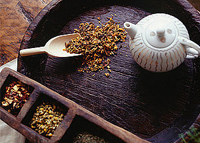
Simplified, tea brewing involves three basic steps: selection of tea leaves, the heating of water, and the steeping of tealeaves. To brew that perfect cup of tea, each of these three steps are crucial and must be done just right to achieve the desired effect.
Tea Brewing equipment
To make a good cup of tea, it is recommended to have a separate kettle for boiling water, and a teapot dedicated only to the steeping process of tea making. The kettle is responsible for heating the water, while the teapot will properly steep the tealeaves to ensure that their full flavors are released.
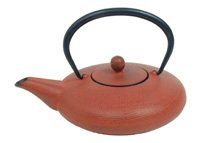 Beyond a kettle and a teapot, one should also have teacups of appropriate size, made from suitable materials, for the proper enjoyment of tea. Ceramic tea wares are widely used for their ideal heat tolerance and heat retention property and are suited to tea brewing. Ceramic tea ware can be further sub-divided, and one can choose from smooth impermeable porcelain on one end of the spectrum to porous yixing clay on the other. Beyond a kettle and a teapot, one should also have teacups of appropriate size, made from suitable materials, for the proper enjoyment of tea. Ceramic tea wares are widely used for their ideal heat tolerance and heat retention property and are suited to tea brewing. Ceramic tea ware can be further sub-divided, and one can choose from smooth impermeable porcelain on one end of the spectrum to porous yixing clay on the other.
Choosing teapots with in-built infusers will also make steeping loose tealeaves easy. Some teapots also come with detachable strainers and are great choices for those who like a little more flexibility when it comes to tea making.
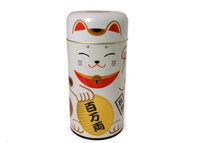
Good tea storage containers are also crucial to keeping tealeaves fresh. This is important because the quality of one's cup of tea depends largely on the freshness and quality of tealeaves. There are a variety of tea storage options, from air-tight tea containers to tea canisters.
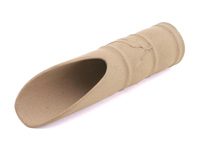 Other nifty tea accessories include mesh tea balls or tea strainers. These are great accessories for those without built-in infusers or detachable strainers in their teapots. Tea scoops will also ensure that tealeaves are handled in the proper method and will prevent moisture and bacteria from bare hands or other forms of utensils from contaminating tealeaves. Other nifty tea accessories include mesh tea balls or tea strainers. These are great accessories for those without built-in infusers or detachable strainers in their teapots. Tea scoops will also ensure that tealeaves are handled in the proper method and will prevent moisture and bacteria from bare hands or other forms of utensils from contaminating tealeaves.
Selecting Tealeaves
Now that you have all the equipment you need for tea brewing, you can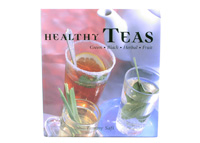 begin by selecting the tealeaves of your choice. In general, one can choose between herbal, white, green, black or oolong tea. Our December 2003 newsletter has a wonderful description on the various kinds of tea available for tea lovers to choose from. For a more in-depth study of the various kinds of tea leaves, their origins, brewing and health properties, books on tea will also offer a deeper look at each specific type of tea. begin by selecting the tealeaves of your choice. In general, one can choose between herbal, white, green, black or oolong tea. Our December 2003 newsletter has a wonderful description on the various kinds of tea available for tea lovers to choose from. For a more in-depth study of the various kinds of tea leaves, their origins, brewing and health properties, books on tea will also offer a deeper look at each specific type of tea.
When choosing tealeaves, one is generally offered two choices: loose tealeaves or tea bags and tea sachets. When it comes to brewing a quality cup of tea, the general rule of thumb is that loose tea leaves are preferable to tea bags and sachets despite the convenience these offer.
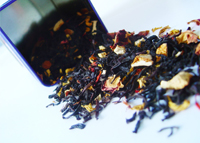 Tea gurus and connoisseurs are usually quick to attest to the richer and fuller flavor of using loose tealeaves over tea bags. This is because tea bags do not allow for tealeaves to circulate in the hot water for them to release their full flavors. Tea gurus and connoisseurs are usually quick to attest to the richer and fuller flavor of using loose tealeaves over tea bags. This is because tea bags do not allow for tealeaves to circulate in the hot water for them to release their full flavors.
When buying tea, it is also important to note their expiration dates. Even though tealeaves do not usually go bad quickly, they do have a shelf life, and the expiration dates are meant to be guidelines to the freshness of the leaves. The fresher the tealeaves, the better the tea they make.
Heating of Water
While this may sound like a relatively simple step, there are tips to heating water that can enhance the quality of the tea one brews. To make a good pot of tea, begin by choosing fresh, cold water that tastes good. Filtered or bottled spring water is recommended for making quality tea. Tap water is not recommended because of municipal water treatments that may negatively affect the taste of tea. The ideal water should have a mineral content that is neither too hard nor too soft, and should be fresh with large amount of oxygen, as oxygen will enhance the taste of tea. Even bottled mineral water may differ from brand to brand, so an amount of experimentation may be needed to find that perfect water for tea brewing. Water that has been boiled for a long time and hot tap water should be avoided, as they will create flat tasting tea with little aroma.
Steeping of Tealeaves
Finally we come to the last step: the steeping of tealeaves. Before this step, it is recommended that the teapot used for steeping first be preheated. As the vessel that will contain the hot water and tealeaves, it is crucial that the teapot be preheated to stabilize temperature to prevent a drastic fall in the boiling water's temperature when poured in. Using a cold teapot will decrease the temperature of boiling water and affect the outcome of the brew.
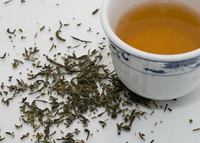 The temperature at which to steep the tealeaves is determined by the kind of tealeaves selected. A general guideline of water temperature for the three basic types of tea are as follows: 180 degrees Fahrenheit for green tea, 190 degrees Fahrenheit for oolong tea, and 200 degrees Fahrenheit for black tea. (Note that all these suggested temperatures are below boiling temperature, which is 212 degrees Fahrenheit). The temperature at which to steep the tealeaves is determined by the kind of tealeaves selected. A general guideline of water temperature for the three basic types of tea are as follows: 180 degrees Fahrenheit for green tea, 190 degrees Fahrenheit for oolong tea, and 200 degrees Fahrenheit for black tea. (Note that all these suggested temperatures are below boiling temperature, which is 212 degrees Fahrenheit).
For the best effect, tea leaves should first be scooped and poured into the bottom of the teapot, before hot water is poured in as this will allow tea leaves to circulate freely in the hot water and allow the most flavor to be extracted.
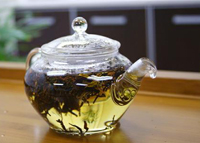 The right amounts of tealeaves and water are also essential to making the perfect pot of tea. It is recommended that three grams of tealeaves be used for every six ounces of water. Depending on the type and size of tealeaves, adjustments might need to be made. For example, for large tealeaf types such as oolong tea, two teaspoons are recommended for every six ounces of water. The right amounts of tealeaves and water are also essential to making the perfect pot of tea. It is recommended that three grams of tealeaves be used for every six ounces of water. Depending on the type and size of tealeaves, adjustments might need to be made. For example, for large tealeaf types such as oolong tea, two teaspoons are recommended for every six ounces of water.
Steeping time differs from tea to tea. Depending on the type of tea, steep time varies for optimal effect. In general, Japanese green teas should be steeped for one to two minutes. Chinese green teas should be steeped for two to three minutes. Two to five minutes of steep time is recommended for white tea. For green oolong, suggested steep time is two to three minutes, while for dark oolong, three to five minutes are suggested. Three to five minutes are also recommended for black teas. Finally, herbal infusion teas require a longer steeping time of five to ten minutes in order for the full flavors of tea to be released.
Depending on the kind of tealeaves, some tealeaves are good for multiple infusions, and can be reused. Fresh hot water can be added to the pot and steeped for a slightly longer time each subsequent time.
Enjoy your cup of tea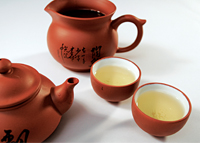
After all that hard work, it is now time to sit down to enjoy the fruit of your labor. Throw an afternoon tea party and invite friends over to share in the enjoyment of your perfect pot of tea.
|